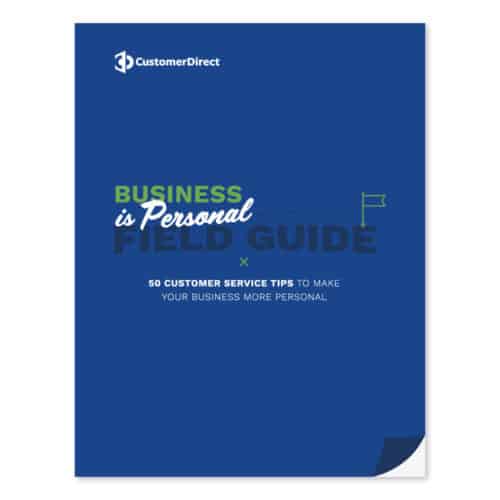The year 2026 is just around the corner, and as you start mapping out your operational strategy and budgets, a crucial question looms: is it time to consider outsourcing your contact support? The benefits are well-documented—increased scalability, access to specialized expertise, and a significant reduction in overhead costs. But the process of integrating an outsourced solution can feel daunting, especially when it comes to the numbers.
Don’t let the fear of a complex budget stop you. This isn’t just a cost-cutting exercise; it’s a strategic move to enhance customer experience and drive growth. We’ve compiled a practical, step-by-step guide to help you successfully integrate outsourced contact support into your 2026 budget.
Your 2026 Budgeting Checklist:
Step 1: Define Your “Why” and “What”
Before you even think about dollars and cents, you need to clearly articulate your goals. What problems are you trying to solve? Are you struggling to keep up with high-volume inquiries during peak seasons? Do you need 24/7 support but lack the internal resources? Are you looking to introduce new channels like live chat or social media support?
- Actionable Tip: Create a detailed document outlining your current support challenges, desired outcomes, and the specific tasks or channels you want to outsource (e.g., email support, phone inquiries, technical troubleshooting). This will be your compass throughout the entire process.
Step 2: Conduct a Comprehensive Cost Analysis of Your Current In-House Support
You can’t budget for a new solution without understanding the true cost of your current one. This isn’t just about salaries. Dig deep into all the hidden costs associated with your in-house team.
- Direct Costs: Salaries, benefits, and payroll taxes.
- Indirect Costs:
- Technology: Software licenses for CRM, ticketing systems, and telephony.
- Infrastructure: Office space, utilities, and IT support.
- Recruitment & Training: The cost of hiring and onboarding new agents, including time spent by managers.
- Turnover: The financial impact of employee turnover.
- Actionable Tip: Build a detailed spreadsheet that breaks down all these costs. You might be surprised at the total number. This data will be your most powerful tool in justifying the new budget.
Step 3: Research Potential Partners and Pricing Models
This is where you move from theory to practice. Research a variety of contact center outsourcing providers. Don’t just look at the biggest names; explore niche providers that specialize in your industry or specific support channels. Pay close attention to their pricing models.
- Common Pricing Models:
- Per-minute/Per-hour: Billed for the actual time spent on a call or task. Good for low-volume, unpredictable needs.
- Per-agent: A flat monthly fee per dedicated agent. Ideal for consistent, high-volume support.
- Per-ticket/Per-interaction: A fixed cost for each resolved issue or interaction. Excellent for transactional support.
- Hybrid Models: A combination of the above, often with a base fee plus variable costs.
- Actionable Tip: Request quotes from at least three different providers. Use your “What” from Step 1 to create a detailed Request for Proposal (RFP) that ensures all quotes are based on the same scope of work.
Step 4: Build a Realistic Budget for the Outsourced Solution
Now it’s time to crunch the numbers. Using the quotes you’ve received, create a detailed budget projection for the outsourced solution. This budget should not be a single number but a dynamic plan that includes:
- Base Cost: The core monthly or annual fee based on the chosen pricing model.
- One-Time Costs: Implementation fees, setup costs, and initial training.
- Variable Costs: A buffer for unexpected volume spikes or additional services.
- Savings: Highlight the direct savings from the costs you identified in Step 2 that will now be eliminated.
- Actionable Tip: Present the budget as a “Total Cost of Ownership” (TCO) comparison. Show the TCO of your current in-house team versus the projected TCO of the outsourced solution over a 12-month period.
Step 5: Prioritize Key Performance Indicators (KPIs) in Your Budget
A successful partnership isn’t just about cost; it’s about performance. Your budget should reflect this. Tie a portion of the budget to performance metrics, a concept known as “performance-based pricing” or “incentive clauses.”
- Examples of Performance KPIs:
- Customer Satisfaction (CSAT) scores.
- First Contact Resolution (FCR) rates.
- Resolution rates (RR).
- Conversion rates (CR)
- Service Level Agreements (SLAs).
- Actionable Tip: Include a section in your budget that outlines potential bonuses or penalties based on these KPIs. This aligns the vendor’s financial success with your customer experience goals.
Step 6: Negotiate the Contract with Budget in Mind
The contract is your final budgeting document. Don’t sign anything without a thorough review. Your budget should be reflected in the contract’s terms and conditions.
- Checklist for Negotiation:
- Are the pricing models and rates clearly defined?
- Are the billing cycles and payment terms explicitly stated?
- Are there clear clauses for scaling services up or down?
- Does the contract include provisions for performance-based incentives and penalties?
- Is there a clear and fair exit clause?
- Actionable Tip: Use the TCO analysis from Step 4 as leverage during negotiations. If a provider’s quote is higher, ask them to justify the value and explore ways to meet your budget without compromising on quality.
Step 7: Allocate and Track
Your budget is approved, and your contract is signed. The final step is to integrate the new costs and track them diligently.
- Actionable Tip:
- Update your 2026 budget to include the new line item for “Outsourced Contact Support.”
- Set up a system to regularly review invoices against the agreed-upon rates and services.
- Meet with your provider monthly or quarterly to review performance against the KPIs you established in Step 5.
By following these seven steps, you transform the intimidating task of budgeting for outsourced support into a strategic, data-driven process. The result isn’t just a lower number on your balance sheet; it’s a more efficient, scalable, and customer-focused operation ready to tackle the challenges and opportunities of 2026.

